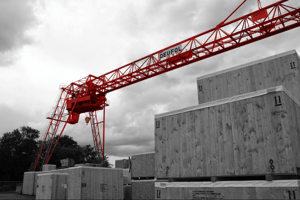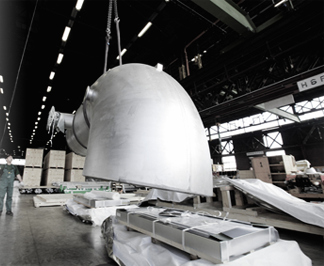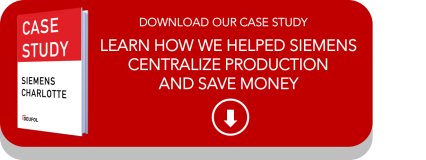
Are you looking for a packaging partner for your industrial products? Or are you re-evaluating your current packaging partner and considering other options? It might be tempting to base your decision on price. After all, you have a price point you’re trying to hit, and going with the least expensive packaging option can help you stay within budget.
However, the cheapest packaging option can often cost you the most in the long run. It might lead to quality issues, which forces you to duplicate orders. You may not get the most efficient packaging solution, which could hurt your bottom line. And you may not get the transparency you need into your distribution process, which could lead to costly mix-ups and delivery delays.
Before you choose an industrial packaging partner, make sure you look beyond price. Ask questions about the packaging partner’s process, how they protect your product, and how they can help you be more efficient. Not sure which questions to ask? Check out the three questions below:
1. What is your approach to material preservation?
Industrial packaging is about more than just constructing the actual container. Anyone can build a wooden box. The best industrial packaging consultants are those who go beyond crate building and actually design a full preservation system for your product.
Even the sturdiest containers can’t fully protect a product if there’s no internal preservation system in place. Internal preservation is the means by which the product is protected inside the container. What keeps it from shifting around? What protects the product if moisture or other elements seep into the crate?
Material preservation starts with design. You use engineers and a host of different technological solutions to design a product that meets your customer’s high quality standards. Your industrial packaging partner should do the same.
Ask them how they design their packages to ensure preservation. What software do they use? What kind of engineers do they have on staff? Are their containers custom or boilerplate? These questions will help you understand whether they can truly protect your product.
2. How flexible are you in terms of location?
Often, the biggest costs in a packaging process aren’t related to the actual packaging materials, but rather the logistics of getting the package where it needs to go. Many industrial packaging companies will package your product in their facility. That means your team still has to get the product out the door and delivered to the packager’s facility.
 But what if that isn’t the most cost effective or efficient solution for you? What if it would be better to have a packaging team in your facility? What if your job is so big and complex that it has to be done onsite? What if you actually need packaging help at your vendor’s facility to make sure your materials arrive in optimal condition?
But what if that isn’t the most cost effective or efficient solution for you? What if it would be better to have a packaging team in your facility? What if your job is so big and complex that it has to be done onsite? What if you actually need packaging help at your vendor’s facility to make sure your materials arrive in optimal condition?
The question here is simple: Can your packaging partner be where you need them, when you need them? Do they have the resources to put their team members in your building? If your job is big enough, could they even co-locate and install their own facility close to yours?
The last thing you want is to commit to an industrial packager and then learn that their process or capabilities limits your ability to work efficiently. Ask about their resources and their flexibility to serve you.
3. How will I know where my materials are in your process?
Finally, you’ll likely want to know how transparent the packager’s process is. You’re entrusting them with your products or materials. You need to know when they receive it, when it’s packaged, and when it’s on its way to its next destination.
Many industrial packaging companies say they offer transparency, but that really means that they’ll provide updates if you call and ask them. You may want more insight than that, especially if your job as many facets and moving parts.
Look for a packaging company that leverages technology to offer transparency. For example, a packaging company may have proprietary software that syncs up with your own software. Then, whenever the packaging company scans a part or crate, you can view a real-time update. Or they may leverage GPS technology to track the shipment’s movement and even the orientation of the package and the environmental conditions during transport.
When you have transparency into your packaging and distribution systems, you can boost your bottom line by looking for areas to improve efficiency. You can also save money by eliminating costly errors and packaging defects.
Choosing a packaging partner is a big decision. It could impact your product quality, your customer satisfaction, and your financial success. Dig deeper when you conduct your due diligence. Ask these three questions, and more, to find the packaging partner who is right for your needs and goals.





Let Us Know What You Thought about this Post.
Put your Comment Below.